A Guide to the Animals and Wildlife of the Black Hills
American Bison

American Bison are truly iconic and have now been officially declared the national mammal of America! Among their many enchanting qualities, baby bison (known as ‘red dogs’) really capture hearts with a rusty red hue like no other.
Though they may appear cuddly, caution is urged when approaching any newborn calf – after all, who would want to test the mettle of such an imposing mother? From March until September each year, these young animals of the Black Hills frolic about in joyous play before taking up more serious pursuits for adulthood.

The male Bison (bull) can weigh up to 2000 pounds and stand up to 6 feet tall! You’ll understand just how large these animals are from the safety of your vehicle or on our Wildlife Tour of Custer State Park. It’s estimated that somewhere between 30 and 60 million of these majestic creatures roamed the plains before settlers arrived.
The female bison put the wild in the wildlife of the Black Hills. At 1000 pounds, they’ll do anything to protect their little Red Dogs. These babies will grow to be the largest animals South Dakota will ever see.
Big Horn Sheep

Bighorn Sheep are acrobatic animals of South Dakota. While you can see them out in the open, more often, they are on craggy hillsides, at the edge of a cliff, or high on a spire in the Badlands. Bighorn sheep are either Rams (Male) or Ewes (Female). The rams are typically 110-250 pounds with curled horns that weigh up to 30 pounds on their own. These animals are herbivores, ranging from the Canadian Rockies to the arid deserts of the Southwest United States.
Their acrobatics comes from the design of their hoofs, having a split in them with rough bottoms. You’ll see these creatures in the most precarious of positions, which can make a beautiful photograph if caught at the right moment.

These Black Hills animals are social, but the males generally stay together, and the females live in groups with the young. The males and females only get together during mating time. In Custer State Park, you can see them along ridge lines and on the rolling hills.
The rugged Black Hills of South Dakota are the perfect home for Bighorn Sheep. These majestic creatures have adapted to their environment in amazing ways, granting them the ability to navigate their habitat with incredible speed and agility. Their skills allow them to survive and thrive in a variety of terrain – from rocky hillsides, desert plains, broad valleys, and steep mountain spaces. They truly are an incredible species that we must protect and preserve!
Birds of the Black Hills
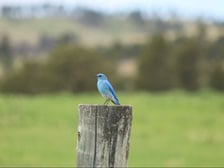
There are over 350 bird species in the Black Hills, and you can see many of them. Be still, listen and look. Standing in one place, you may hear dozens of songbirds. Some migrate as far as South America, while other birds are in the Black Hills year-round.
One of my favorite birds in the Black Hills is the Mountain Bluebird. The male has iridescent blue feathers, while the female is more muted. Like many birds, you can see them perched on fenceposts or barbed wire. In Custer State Park, many birdhouses are explicitly made for the Mountain Bluebird.
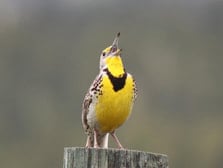
The Western Meadowlark is stunning and has a beautiful voice to boot. In almost any grassland in and around the Black Hills, you’ll hear its call. It can be one of the most soothing sounds in the grasslands and prairies surrounding the Black Hills.
Raptors of the Black Hills include varieties of Hawks, Eagles, Falcons, and Owls. You can often find Bald Eagles and Golden Eagles in Ponderosa Pines, Cottonwood Trees, and even along the roadside, looking for a fresh kill. Hawks and Falcons are winged animals that make themselves known. It isn’t rare to see one of these birds; you just have to stop and look around.
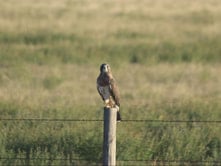
The Magpie is a pest for some and a love for others. I love the Magpie. It plays a significant role in the creation story of the Lakota People. Magpies can be found in abundance. Look for their blue and black feathers.
If you’d like to learn more about the many birds of South Dakota, we recommend visiting the Black Hills Audubon Society Webpage , and downloading a bird identification app called Merlin.
Black Bears

The Black Bear of the Black Hills is a sight to behold! Found in South Dakota and Wyoming areas, this bear makes its home in the Northern Black Hills Bear Lodge District. As far as we know, these bears were hunted to extinction but are returning to the northern regions. Occasionally they are spotted in the central Black Hills.
Black Bears typically range from North Carolina to Canada; however, the Black Bear of the Black Hills is one of only two subspecies found west of the great plains, making them a rare and unique find. With its significant habitat consisting of bends and prairies, these Black Bears will surely be a highlight for any nature enthusiast exploring the region.
Bobcats
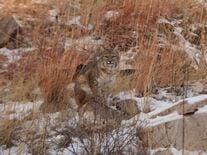
The Bobcat population in the Black Hills region has risen in recent years, much to the astonishment of wildlife experts. Alongside other species like elk, mountain lions, and deer, these majestic felines have become an integral part of the natural ecosystem. While much remains unknown about their secretive lives, they are thought to live among rock outcrops, dense forests, and shrubby wetlands.
Bobcats typically hunt alone during twilight or under the protection of night’s cover. Despite their reclusive nature, sighting one is a remarkable experience that takes you right back to man’s place in the wild. A glimpse of a bobcat active in its natural habitat helps remind us of why preserving this spectacularly diverse yet fragile landscape is so important.
Coyote

Coyotes in the Black Hills of South Dakota have a unique legacy within the Lakota people and their culture. Known to Lakota as šuŋgmánitu or “the trickster one,” coyotes play an essential role in Lakota society. In addition to being honored as sacred guardians, the Lakota tell stories of coyotes’ mischievous ways. In Lakota culture, the coyote’s distinctive howl is treated almost as a song or story.
Generally living in small family groups with ranges encompassing up to 10 square miles, certain behaviors around nesting, denning, and hunting can be seen throughout the Black Hills among these sly creatures. As you explore the area, keep your eyes and ears open – you might see or hear one or many of these beloved animals in this region.
Elk of the Black Hills
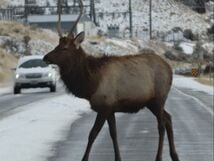
Elk is a Black Hills wildlife staple, with the Black Hills National Forest said to have some of the highest density of elk on the continent. These majestic animals are part of the Black Hills animals that attract tourists far and wide. At certain times of the year, hundreds of curious onlookers flock to local parks and lookout points in search of large herds of elk. As one of the most iconic Black Hills sights, people from all over come to witness these graceful creatures and hear their haunting bugles echoing across the rolling hills. There’s no better experience than seeing elk in their natural Black Hills habitat.
Mountain Goats
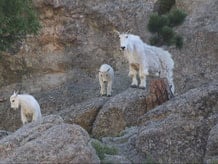
Their bright white color does anything but blend into the background during the spring, summer and fall. They stand out, but only when they want to. Mountain goats roam pretty much wherever they want, but one of the best places to see them is at the Cathedral Spires around the Needles Eye Tunnel.
Oddly enough, the mountain goats aren’t native animals of the Black Hills. There were 6 original goats given to Custer State Park from Canada as a gift. They arrived in 1924, and on the first night, 2 escaped with the rest soon thereafter. They didn’t take long to reach Black Elk Peak, which provided excellent protection. The original 6 are responsible for the population reaching upwards of 400, with around 200 in the wild today.
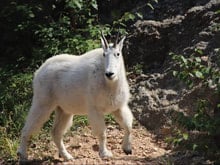
Mountain goats can be found near Mount Rushmore, Black Elk Peak, and the Cathedral Spires. Keep an eye out for one of the most adored wildlife in the Black Hills. Although we can’t guarantee it, you might see these magical creatures on one of our Black Hills Adventures. Even though mountain goats are not animals native to South Dakota, we’d like to ensure they feel at home.
Mountain Lions
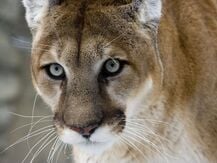
The Black Hills of South Dakota is home to a unique population of mountain lions, stunningly adapted to the Granite Peaks that dominate the landscape. This species of lion has learned to thrive in rugged terrain and habitats, hunting large prey like elk and deer while stealthily avoiding its own predators.
Mountain lions in this region have demonstrated remarkable tenacity and cunning, making them an incredible species to witness when observed in their native habitat. Catching a glimpse is an extraordinary experience that cannot be found anywhere else in the world.
Mountain lions in this region have demonstrated remarkable tenacity and cunning, making them an incredible species to witness when observed in their native habitat. Catching a glimpse is an extraordinary experience that cannot be found anywhere else in the world.
Mule Deer
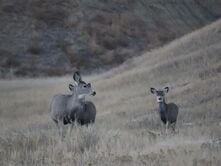
All animals in the Black Hills are a wondrous sight to behold! Among them, the Mule Deer are particularly majestic. These graceful creatures have been known to inhabit this area for hundreds of years, living among dense forests and open grasslands. Their beautiful coats offer a pleasing contrast against the Black Hill’s rocky landscape, and they often stand out as unique among its other wildlife.
As prey species, they reside mainly in areas that provide suitable hiding spots and enough vegetation to feed on – allowing them to coexist with other Black Hill animals while remaining in tune with their natural habitat. Unsurprisingly, the Black Hills are home to so many of these majestic Mule deer!
Prairie Dogs
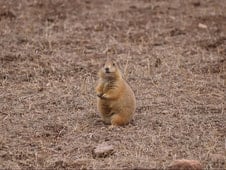
The Prairie Dog is one of the most beloved creatures of the Black Hills and Badlands. Any Black Hills tour company should know precisely where these chubby little buggers exist. Prairie dogs can be found in the lower elevations of the Black Hills. Related to the squirrel, they look similar, but there are some essential differences.
The Prairie Dog lives underground and is considered a keystone species. This means if they were to disappear from the environment they live in, quite a few things would collapse. The Prairie Dog is at the bottom of the food chain, meaning various Black Hills animals depend on their survival.
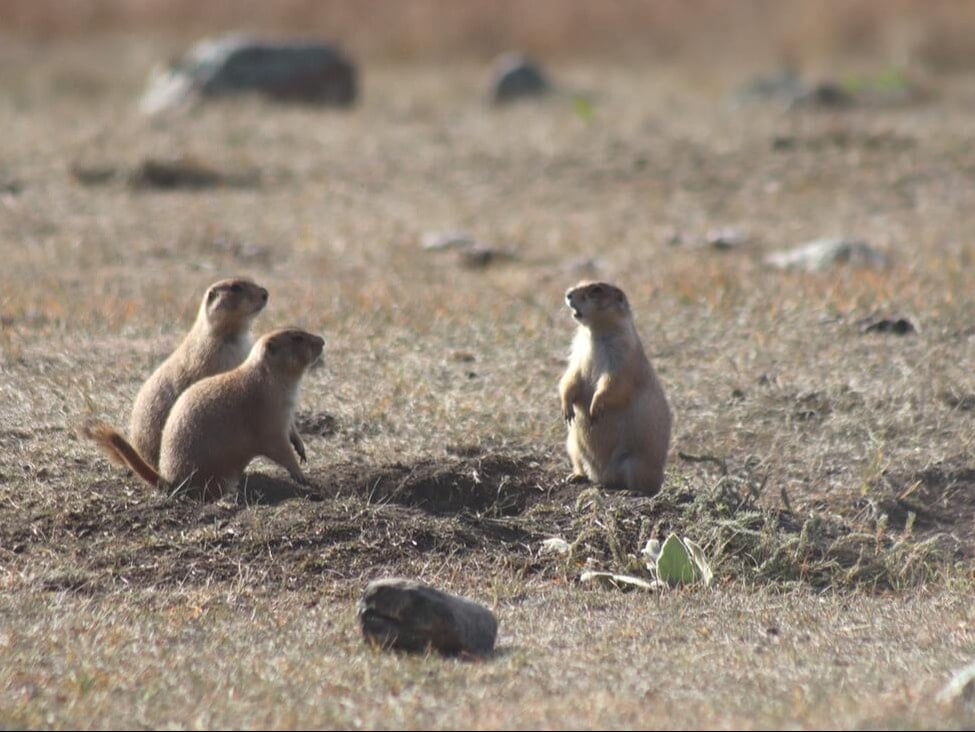
They also create an exciting habitat. When Prairie Dogs gather in large numbers and build their underground homes, this becomes what is known as a “Prairie Dog Town.” How can you tell if you’ve come upon this wild west town of critters? Look around for dirt piles in cone shapes, about 3-5 feet in diameter. You’ll find them in open prairies and with a keen eye. Bumps, mixed flowers, and weeds will exist around a prairie dog town rather than uniform grasses.
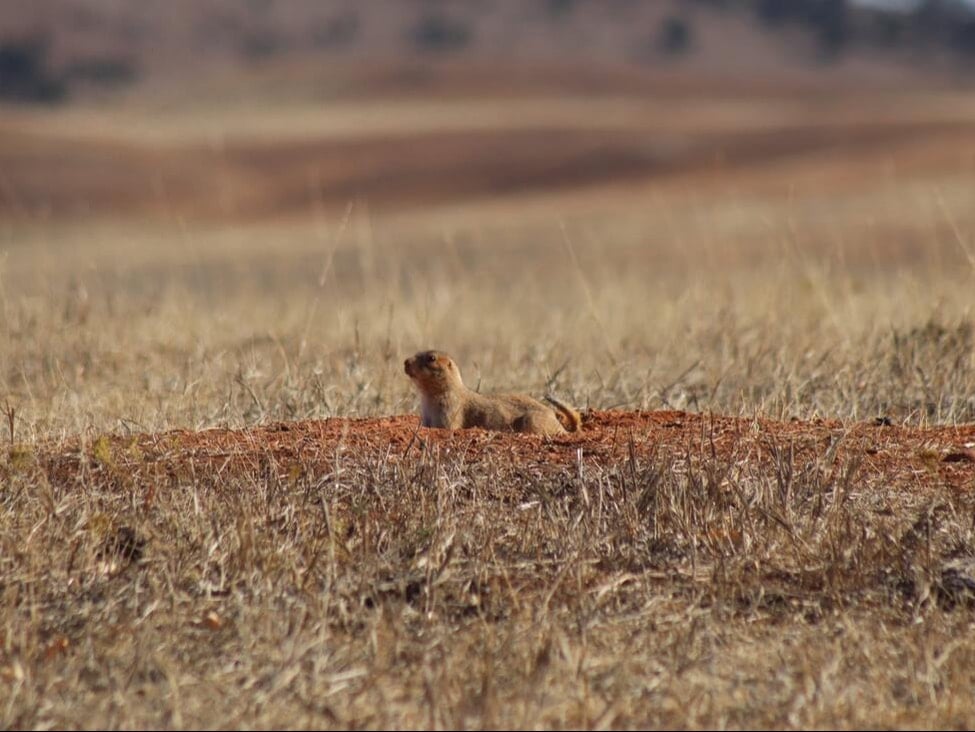
This is because when a prairie dog builds its home, it flings up dirt from the ground creating these mounds. That exposed dirt is the perfect ground for wildflower seeds and weeds to sprout from, making it the ideal munching ground for elk, antelope, and bison. Watch out, though; the entrances to their homes are large holes that can go straight down, making it a hazard for animals and humans.
Prairie Dogs are possibly the most abundant wildlife in the Black Hills.
Pronghorn

One of the most breathtaking sights in the Black Hills is seeing the pronghorn antelope grazing at sunset. Wildlife Loop Road in Custer State Park is one of the best places to observe these majestic animals, as they can often be found running and leaping in open meadows and small hills. While their snowy coats blend seamlessly into their natural surroundings, spotting them with a keen eye is easy. These unique survivors from the Ice Age possess remarkable speed, aptitude, and agility that make them a captivating marvel to observe in their natural habitat.
Red Fox

The red fox of the Black Hills is a unique and fascinating species that have inhabited the region for centuries. This species of fox is well-known for its beautiful red coat, but many may not know that they have incredible adaptability, intelligence, and resourcefulness. Their most remarkable quality is their ability to thrive in urban and rural environments. For example, these animals can easily make their homes in places like cities and suburbs while still being able to hunt using stealth and cunning tactics. All these features combine to make the red fox of the Black Hills an intriguing species with a long history and bright future in this part of Lakota territory.
White Tailed Deer

The Black Hills of South Dakota are home to an incredible variety of wildlife, and the White-Tailed Deer is one of them. These majestic animals inhabit the Black Hills, taking refuge in the lush fields, towering forests, and lush valleys. Most active at dusk and dawn, these deer can be spotted within Custer State Park and Badlands National Park. Each animal truly stands out against the Black Hills wilderness, their white tails bouncing as they leap away from obstacles. If you’re lucky enough to catch a glimpse of one while out on a Black Hills venture, it’s certain to create a memorable experience!